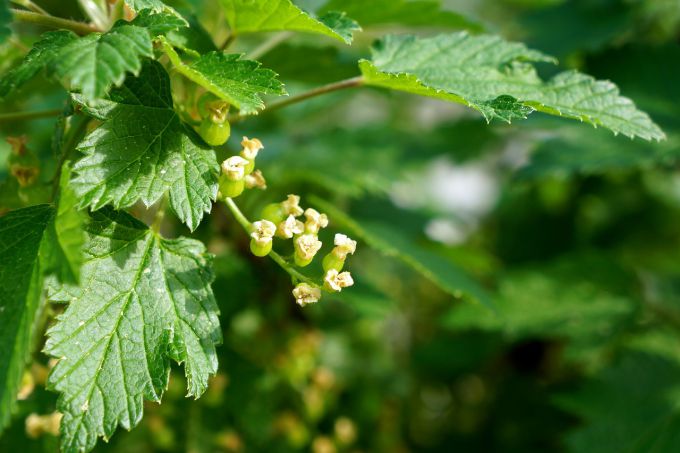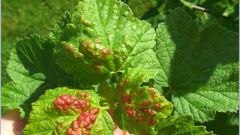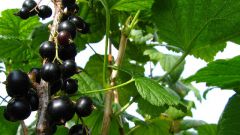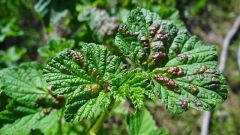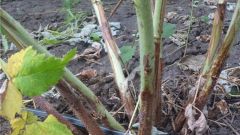If you notice on the leaves of currant red or brown spots, it is likely that the Bush settled Gallic aphids. This pest is quite common in the middle part of Russia, and especially active it is after a warm winter, excessively hot and dry summer. In the spring when it comes time to Bud break, larvae aphids hatch from eggs (eggs are attached to the branches of a currant) and move to the lower part of the young leaves of the shrub. The pests suck the SAP from the leaves, which leads to the formation of the leaves red and brown convex spots.
If you do not take any measures to destroy Gallic aphids, currant leaves curl and become deformed. The next year a colony of these pests increase, leading to further defeat the bushes and other plants in the garden. Remember, aphids are attracted exclusively to young black currant leaves, so as soon as they stiffen, pests start to look for a more suitable feed, settle on the leaves of other trees and shrubs in the garden, actively proliferate. To move around the garden it is easy, because female aphids in a certain moment of its development are winged and are able to move quickly to a fairly large distances.
Gallic aphids on currant: measures
If aphids attacked the currant bushes before the ripening of berries, in this case, you should refuse the processing of currant chemicals, and to give preference to homemade decoctions and infusions. Do a good job with aphids infusions of chamomile and garlic, tobacco and yarrow, sage and wormwood. To create the infusion is only required to grind one or several types of plants, cover them with water, let it brew for a day and drain. Infusion better to stick to the leaves, you can add some liquid soap (no more than 30 ml per 10 liters). In the processing special attention should be given to the young shoots, because that is where the greatest concentration of pests.
If last year on the leaves of currants you notice individual leaves with red spots, with the arrival of spring has not yet blossomed buds, treat branches of the currant solution nitrafena. This medicine is inexpensive and larvae of the aphid to cope with a Bang.
Anthracnose - a fungal disease that can cause redness of the leaves of red and black currants. This disease is very insidious, it affects the taste of berries, significantly reduces productivity, decreases the growth of new shoots on the bushes. If you notice that leaves a lot of reddish or brown spots (not convex), which after several days leads to yellowing and fall of leaves, you can be sure, Bush struck exactly the Anthracnose. For a full treatment of currant from this disease you need to take a number of steps:
- plant the bushes away from softwood;
- collect and burn fallen leaves;
- carefully perekapyvayut in the autumn the ground around the bushes of currant;
- spray the bushes three times during the summer season, 1% Bordeaux mixture, first time spraying produce after flowering, the second - 10 days after the first treatment, the third after harvesting;
- during flowering currant make phosphate and potash fertilizers.
